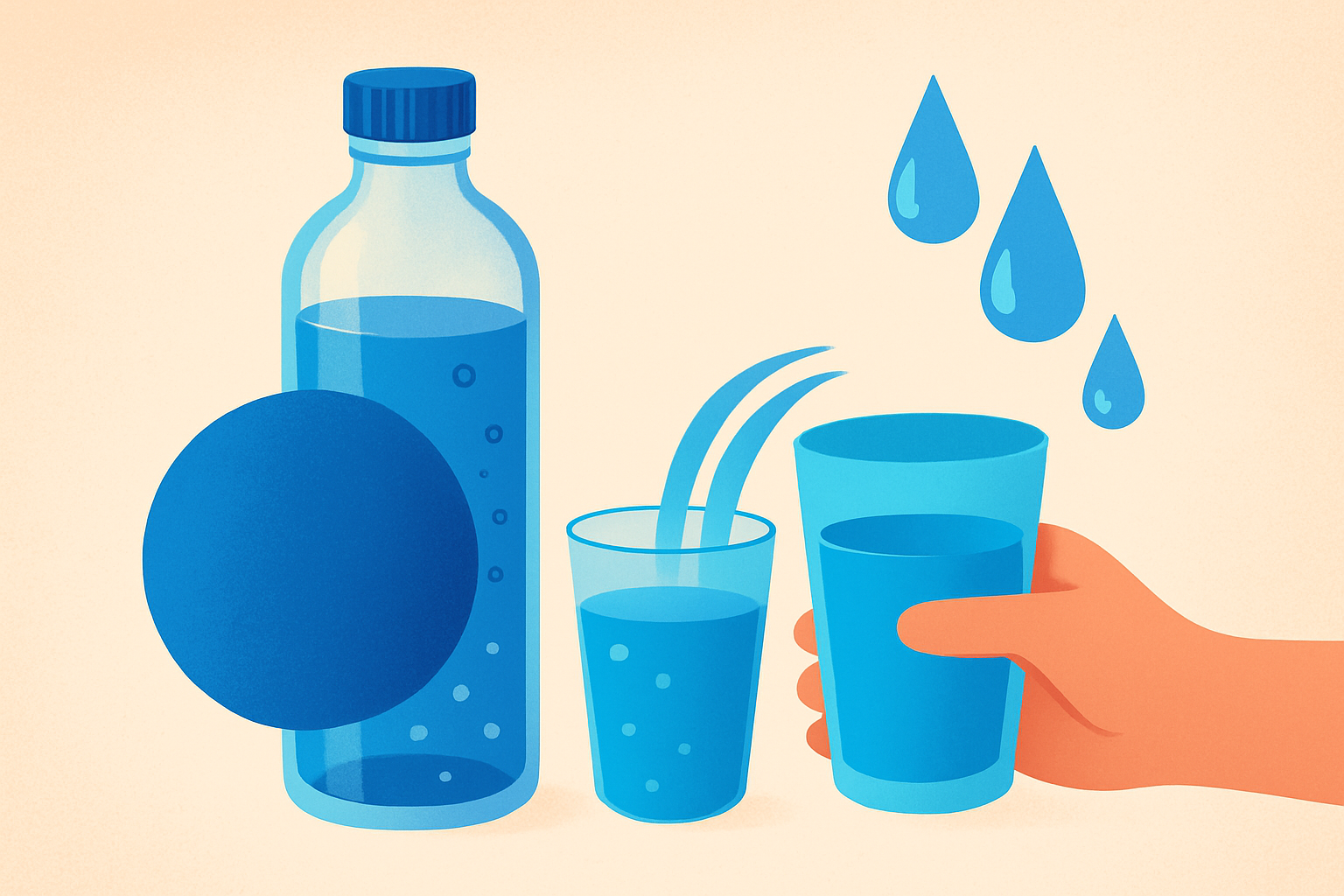Hydration: How Much Water Do You Really Need?
If you’ve ever been told to “drink eight glasses of water a day,” you might have wondered—is that really the magic number? The truth is, hydration is more personal and dynamic than a single rule can capture. Your body’s water needs depend on who you are, where you live, what you eat, and how you move.
In this post, we’ll unpack the science of hydration, explore how much water you actually need, and share practical ways to make sure you’re giving your body the fluids it craves.
Why Hydration Matters?
Water isn’t just something you sip to quench thirst—it’s the foundation of almost every process in your body. It helps regulate temperature, transport nutrients, cushion joints, flush waste, and keep your brain alert. Even mild dehydration (think 1–2% of your body weight lost through fluids) can cause fatigue, headaches, and trouble concentrating.
Your body is constantly losing water—through sweat, breath, urine, and even your skin. Replacing that loss is essential for health and energy.
The “Right” Amount of Water
The classic “8x8” rule
The old recommendation of eight 8-ounce glasses a day (about 2 liters) is easy to remember, but it’s more of a guideline than a hard rule. Some people need more, others less.
Scientific recommendations
The U.S. National Academies of Sciences, Engineering, and Medicine suggests:
About 3.7 liters (125 ounces) per day for men
About 2.7 liters (91 ounces) per day for women
These totals include all fluids—both from beverages and water-rich foods like fruits, vegetables, and soups. So if you eat lots of watermelon, cucumber, or oranges, you’re already topping up your hydration without realizing it.
Factors That Change Your Water Needs
Your daily requirement can shift depending on:
Activity level – Exercise or physical work increases sweat loss, meaning you need to replenish more.
Climate – Hot, humid environments (or high altitudes) cause greater water loss.
Health status – Illness, fever, diarrhea, or certain medications can alter hydration needs.
Pregnancy & breastfeeding – These require extra fluid to support your body and your baby’s needs.
Diet – High-protein, high-fiber, or salty diets can slightly increase fluid requirements.
Listening to Your Body
Your thirst is a reliable signal—most healthy adults can simply drink when thirsty and stay adequately hydrated. But there are a few extra signs to watch for:
Urine color – Pale yellow generally means you’re well-hydrated; darker means you might need more fluids.
Energy levels – Unexplained fatigue can be an early sign of dehydration.
Dry mouth or skin – These are also classic hydration cues.
Tips to Stay Hydrated
Start your day with water – A morning glass replenishes fluids lost overnight.
Keep water nearby – Having it in sight makes it easier to sip throughout the day.
Flavor it naturally – Lemon, cucumber, mint, or berries can make plain water more appealing.
Eat your water – Include water-rich foods like lettuce, tomatoes, citrus fruits, and melon.
Hydrate before, during, and after exercise – Especially in hot or sweaty conditions.
Can You Drink Too Much Water?
Yes—but it’s rare. Overhydration, or hyponatremia, happens when you drink so much water that you dilute the sodium in your blood. This can be dangerous, but it usually only occurs in extreme cases, like endurance events, where people drink excessively without replacing electrolytes.
Bottom Line
There’s no one-size-fits-all number for water intake, but most people do well aiming for 2–3 liters of total fluids daily, adjusting for activity, environment, and personal needs. Listen to your body, pay attention to thirst and urine color, and remember: hydration isn’t just about how much you drink—it’s also about what you eat and how you live.
In other words, staying hydrated is less about obsessing over ounces and more about building small, consistent habits that keep your body balanced and your mind sharp.
